

Winged Victory - the untold story of Australia II's keel design
Sports /News
Weather Forecasts & Live Reports
Buy & Sell /Classifieds

Copyright © 1997-2024 Seabreeze.com.au - All Rights Reserved.
Bob Hawke, Alan Bond and Ben Lexcen were key players in Australia II's extraordinary 1983 America's Cup victory
It was the David and Goliath story that put Australia on the world sailing map, an extraordinary feat that ended the longest winning streak in any sport, anywhere in the world.
And with a rich list of characters including a larrikin prime minister, a millionaire businessman whose dodgy business dealings funded the enterprise, and a genius inventor whose top-secret keel design was to revolutionise the yachting world, the story of how Australia snatched the famed America's Cup from the New York Yacht Club (NYYC) in 1983 is the stuff of legend.
In the storied 132-year history of the cup, no challenger had come close to threatening the dominance of the well-to-do NYYC, which had held the trophy since winning a sailing race around the Isle of Wight in the UK in 1851.
Indeed, some NYYC members seemed to regard the prestigious trophy as the club's unassailable birthright, over which it would have permanent custody.
Alan Bond, however, had other ideas.
The national hero who became a villain
Yet to be unmasked as a corporate villain who swindled millions from investors and taxpayers, Bond in 1983 was well on the way to becoming the national treasure the America's Cup would turn him into, albeit temporarily.
Back then he was the rags-to-riches success story that so many Australians aspired to be, the humble sign writer turned millionaire property developer who had migrated from the UK in 1950 without a penny to his name.
Over the subsequent decades, his burgeoning business empire would go on to encompass land developments, breweries, television stations, diamonds, oil, gold, an entire English village, a Gold Coast university and even world-famous Impressionist paintings, to name just a few of his colourful enterprises.
Bond's passion for making money was matched by his skill at self-promotion, and in the America's Cup he sensed an opportunity to make a name for himself on the world stage.
Journalist Paul Barry's biography, The Rise and Fall of Alan Bond, quotes him telling a journalist: "Anyone who considers racing for the America's Cup isn't a business proposition, is a bloody fool."
If increasing his profile and leveraging opportunity was the aim, Bond succeeded wildly.
By 1983 he'd already financed three America's Cup challenges, earning an Australian of the Year award for his efforts in 1978.
And his perseverance was to pay even bigger dividends on the fourth attempt when Australia II crossed the finish line on September 26, 1983, to snatch the unlikeliest of victories from the jaws of defeat, making Bond a national hero and giving him the sort of wall-to-wall publicity even he could have scarcely dreamed of.
The top-secret advantage
Like Bond, boat designer Ben Lexcen was a self-made man with little formal education.
After designing three previous boats for America's Cup challenges, only one of which managed to win a single race, Lexcen knew a radical new approach would be needed to win the cup.
Ever the gambler, Bond was prepared to back his man.
Lexcen was sent to a sailing design institute in the Netherlands, reportedly with a blank cheque from Bond, to work on a new design.
What emerged from months of testing has gone down in the annals of sailing history.
Lexcen had developed a radical new 'winged' keel, like nothing the sailing world had ever seen before which was to herald a revolution in yacht design.
The winged keel made Lexcen's new boat, Australia II , much faster and more manoeuvrable – and importantly, the Australians' secret weapon also became a psychological weapon.
The team went to great lengths to hide it from the outside world and the Americans in particular, shrouding the keel in tarpaulins as it was transported and hiring armed guards around the clock to protect it from prying eyes.
The unlikely victory
With six unsuccessful challenges behind it, beginning in 1962 with media mogul Frank Packer's yacht Gretel, Australia was thought to have little chance of winning the imposing sterling silver trophy from the iron grip of the US.
But when Australia II began to dominate the trial races to choose a contender for the 1983 America's Cup, the scions of the NYYC were determined to do everything in their power to win.
First, they tried to buy the keel design from the Netherlands testing facility where it was developed, and when that failed, they repeatedly tried to claim the keel violated the rules of the race, though it had been earlier deemed allowable. That tactic also failed.
Nonetheless, the 1983 competition had begun in emphatic style for the US team on their boat Liberty, which easily defeated the Australians in the first two races, helped by equipment failure on Australia II .
Then unexpectedly, the Australian boat won the third race of the series, only to lose the fourth, leaving the Americans in a commanding position at 3-1 in the best-of-seven series.
But when the Australians snatched victory in the fifth, then the sixth race, sailing fever engulfed the nation and suddenly everyone wanted to be a part of it.
It was the first time in 132 years the tournament had even run to a seventh race – usually the Americans won it convincingly in just four – and tensions ran high.
The defining moment came in the middle of the night Australian time.
After starting the race well behind Liberty, Australia II surged forward in the last leg of the nail-bitingly close final to cross the finish line ahead by a convincing 41 seconds.
Improbably, the cup was Australia's.
The nation's pride
Forty years on, it's almost impossible to convey the sheer joy and pride that washed over Australia in the wake of the victory.
Millions had tuned in overnight to watch the coverage on television, and apart from the joyous moment Australia II sailed across the finish line, were additionally treated to images of an ecstatic prime minister, who had rushed to Royal Perth Yacht Club for the celebrations.
Dressed in an unforgettable jacket emblazoned with the word Australia and doused in champagne, an almost hysterically excited Hawke famously declared: "Any boss who sacks anyone today for not turning up is a bum".
Waking up bleary-eyed the next day, it was as if the country had taken leave of its senses.
Boxing kangaroo flags decorated shops and houses (a windfall for Bond who owned the image), those that had taken Hawke's advice to take the day off flocked to pubs and clubs to celebrate, and television and talkback radio was giddy with the excitement of it all.
The anthem of the Australia II team, Men at Work's Down Under , was played incessantly, and the nation revelled in the glory.
It was more than just a sporting contest. Somehow this relatively obscure tournament held on the other side of the world had united the country in joy and excitement.
Australia loves an underdog and the country's larrikin spirit, embodied in its prime minister, was elevated to new heights by the minnow yachting syndicate from an obscure sailing club in Perth trouncing the might of the US establishment.
The country erupted in a celebration that was to last weeks, the culmination of which was the triumphant return of the boat and its crew to Australia a month after their stunning victory.
Perth's moment of glory
Home city Perth threw a huge parade through the city and a day-long concert on the city's foreshore featuring the crème de la creme of the 1983 entertainment scene, including Peter Allen and the now disgraced Rolf Harris.
More than 200,000 people are estimated to have turned out that day – nearly a quarter of the city's population – to cheer on the conquering heroes and get a glimpse of the famed trophy.
Freelance photographer Roger Garwood remembers it well, and his anecdote about that time encapsulates the heightened emotions many felt.
Inundated with requests from editors around the world for an image of the cup itself, Mr Garwood phoned Royal Perth Yacht Club to ask if he could photograph it, and was surprised to be told the club would deliver it to his home in Fremantle.
"The cup had arrived in a Holden car driven by a security guard," he said.
"It was in a Perspex case, sitting on the front passenger seat and strapped in place by the seat belt.
"We carefully unloaded it and carried it down the hallway to the living room where it was taken from its case.
"Thus [my home] was the first place the cup visited in Fremantle and arguably the first private home in Australia."
Without telling him what was in store, Mr Garwood urged his parents — mother Ethel and his sailing mad father Oliver — to come over quickly.
"They had no clue and walked into the living room where the old boy, now 82, was totally dumbstruck," Mr Garwood recalled.
"He stood for a few seconds staring at the cup, not quite understanding how this moment had come about.
"Then he burst into tears."
- X (formerly Twitter)
- Arts, Culture and Entertainment
- Community and Society
- Horse Racing
- Human Interest
- Other Sports
Popular searches
Popular pages.
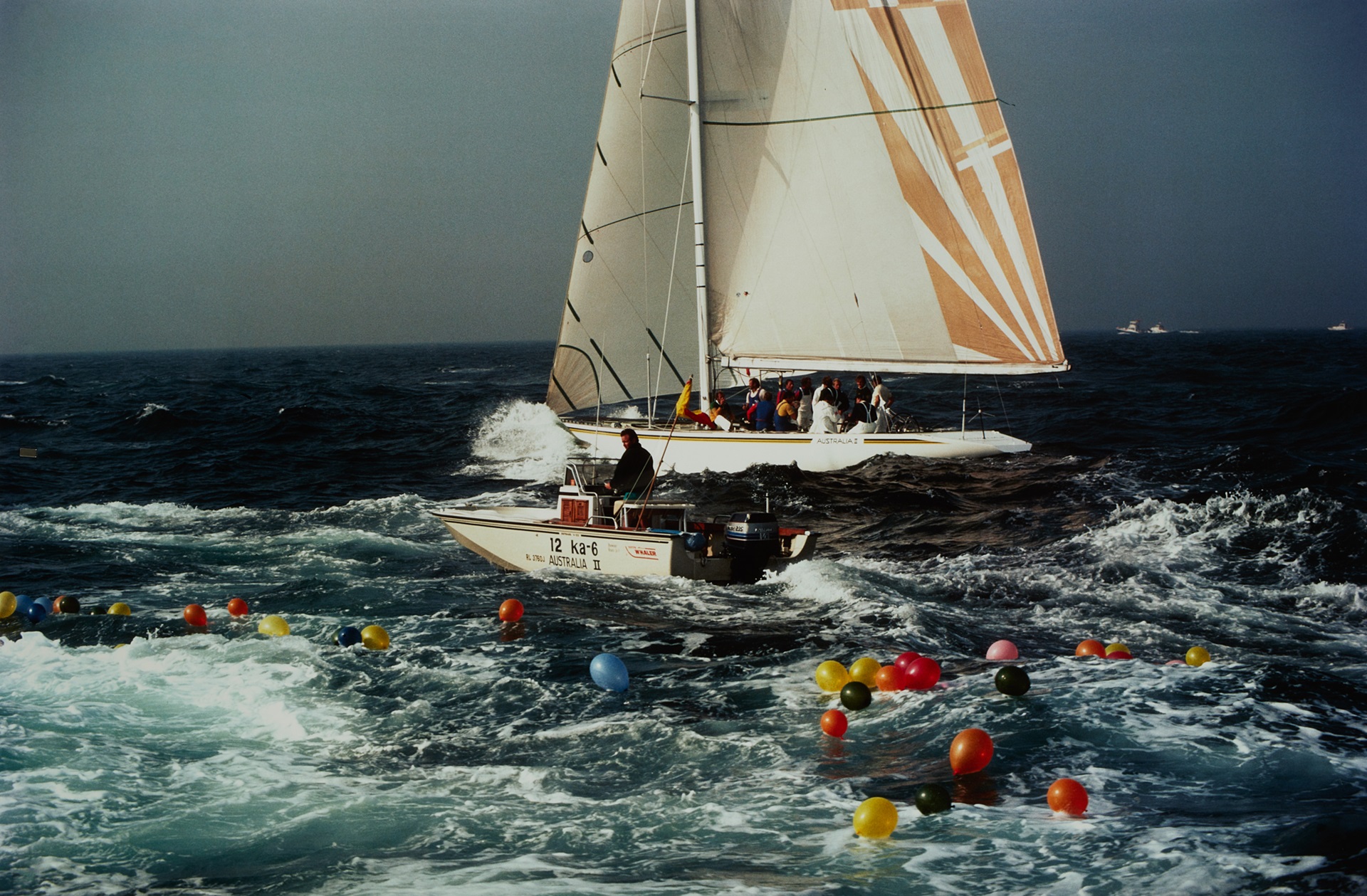
Show us the Keel: Winning the America’s Cup in 1983
Australia II has become one of the nation’s most recognisable vessels, thanks to that extraordinary America’s Cup win in 1983. Almost everyone knows about its upside-down winged keel designed by Australian Ben Lexcen that was unbeatable that year.
In May 1981 Ben Lexcen sent this cryptic telex message from Wageningen (Netherlands) to Perth:
" ABOUT TO TAKE YACHT DESIGN INTO THE SPACE AGE DARTH VADER LOOKS GOOD IN COMPUTER IN 3 DIMENSION WILL TEST ON WEDNESDAY 10th JUNE BEN SKYWALKER" Lexcen had begun testing keel designs with a team at the Netherlands Ship Model Basin. He named his radical concept of an upside-down keel with winglets ‘Darth Vader’, referring to the all-powerful villain of the Star Wars movies that took cinema by storm in 1977 and 1980. Signing his own name after character Luke Skywalker added to the Star Wars connection. Lexcen’s references to Star Wars were part of his quirky character that masked enormous technical ability and non-linear thinking. His drawings chart the progress from a conventional design to the winged profile. His design challenged the strict formula for designing 12-Metre class racing yachts, known as the America’s Cup Rule. A revolution was about to occur. Australia II , with its winged keel was kept literally under wraps before the America’s Cup races off Newport, Rhode Island. To chants of ‘Show us the keel!’ and a media frenzy about what is hidden under the covers, Australia II and its boxing kangaroo mascot sailed to victory and into the hearts and minds of Australians. 26 September 1983 was a monumental day in the history of Australian sport.
Show us the Keel: Winning the America’s Cup in 1983 takes us back to September 1983 when John Bertrand and his crew crossed the line to take the America’s Cup from the USA for the first time in its history. Alongside the design drawings, the exhibition includes a range of items associated with the win. The free exhibition is in Wharf 7, Maritime Heritage Building behind the main museum building and is open from 9am to 5 pm Monday to Friday.
Australian National Maritime Museum, Director, Ms Daryl Karp interviews Australia II skipper, John Bertrand AO on sailing, leadership and the America’s Cup 40 years on.
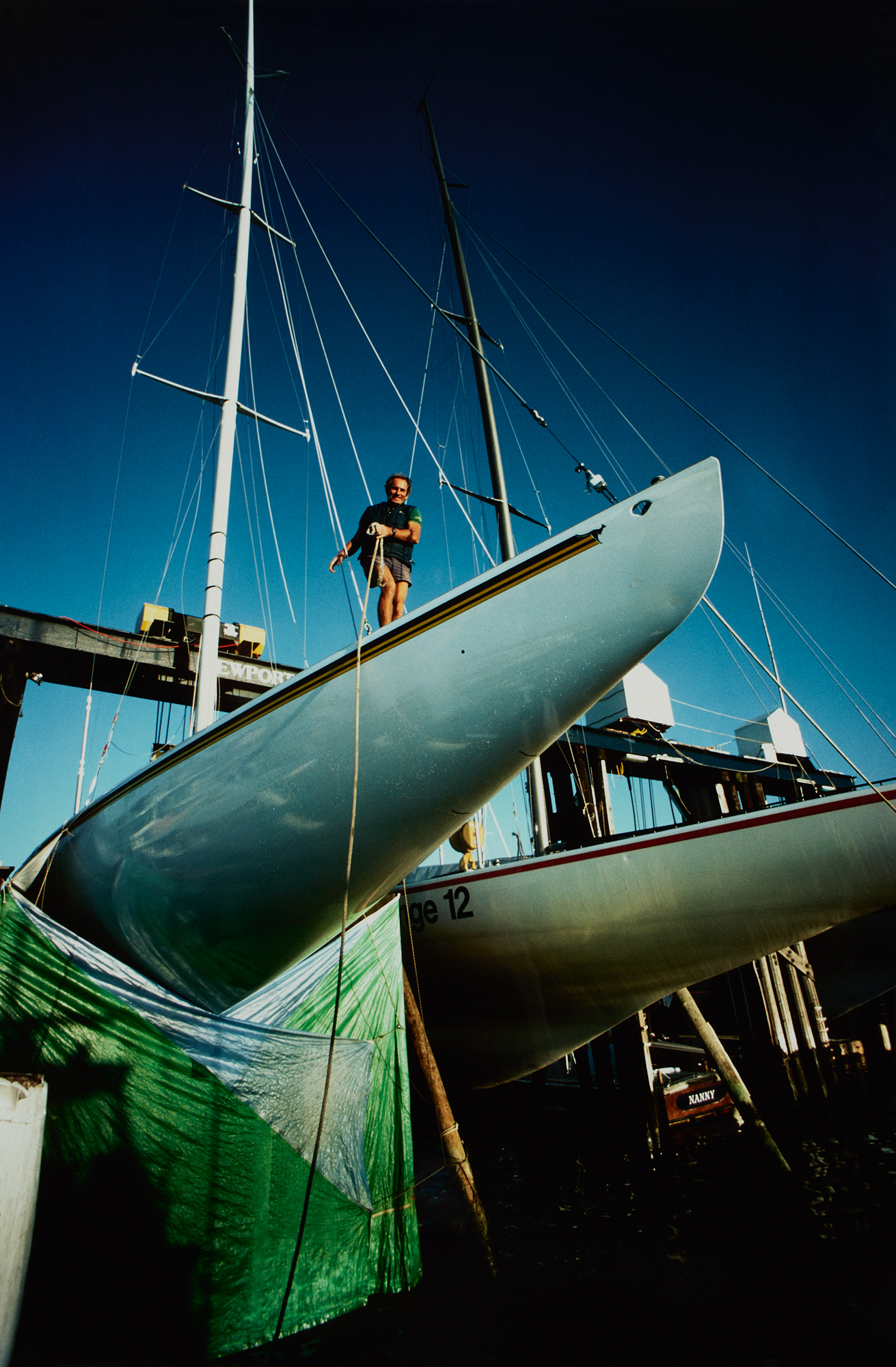
You might like

Wharfies' Mural
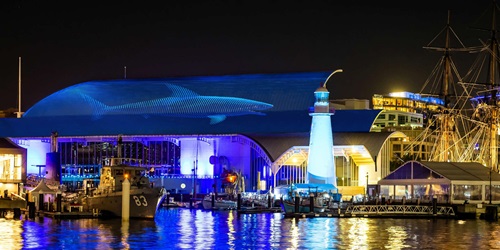
australian owned - satisfaction guarantee - worldwide shipping

PROFESSIONAL MODEL SHIP MAKER
Happy Customers in over 50 countries

100% HANDCRAFTED FROM WOOD
Fully Assembled & Attention to Detail

TIMELESS VALUE – GREAT DÉCOR & GIFTS
30-Day Money Back Satisfaction Guarantee

FREE SHIPPING IN AUSTRALIA – SYDNEY STORE
For Orders From $150
Australia II Sailing Yacht: The Pride of Australia
- No Comments
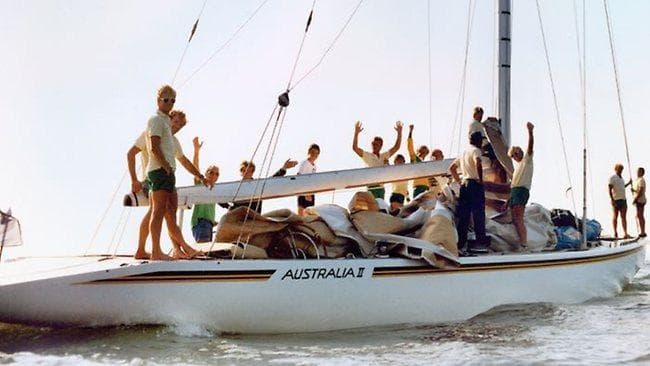
Share with:
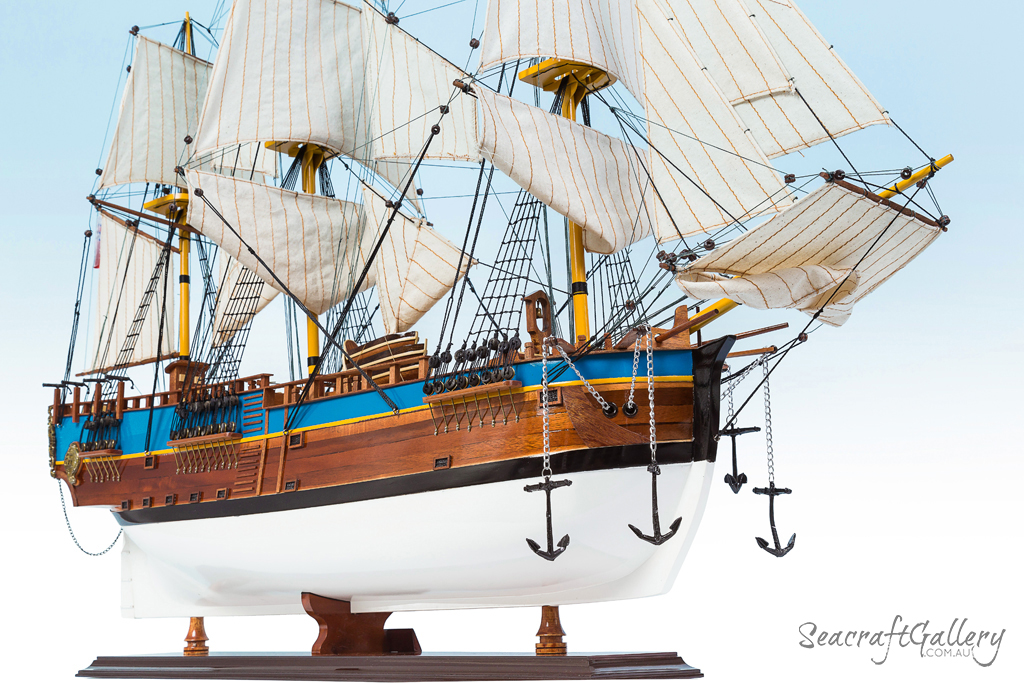
Tips to Buy Model Ships
Related posts.
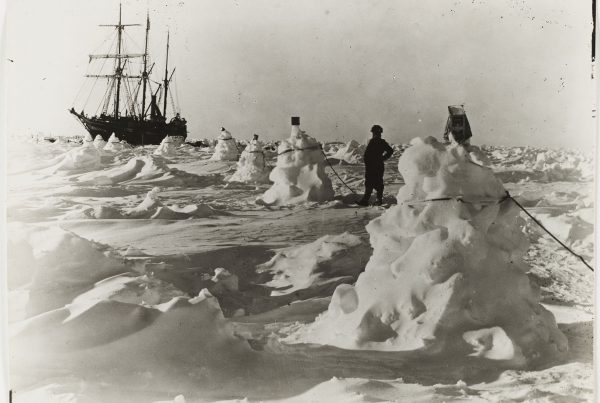
SS Oriana: The Queen of the Seas and Her Epic Journey to Australia
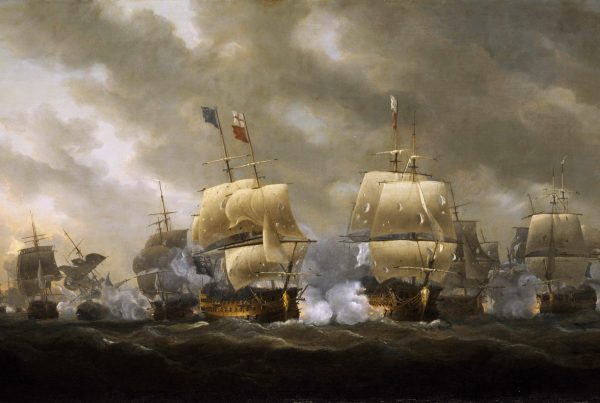

The French Ship Soleil Royal – What makes the Soleil Royal so famous
Author SeacraftAdmin
Leave a reply cancel reply.
Save my name, email, and website in this browser for the next time I comment.
Shop with us
- Packaging and Shipping
- Shop Policy
- Corporate Gifts
- Custom Models
- Become a Stockist
- Worldwide Shipping
About Seacraft Gallery
- Our Passion
- How we build model ships
- Testimonials
- Community supports
Phone : (02) 9709 6252
Email : [email protected]
Mail : PO Box 207, Miranda NSW 1490
Monday to Friday 9AM to 5.30PM Saturday 9AM to 4PM
Sign up to our newsletter to get the latest updates
- Your Email *
- Comments This field is for validation purposes and should be left unchanged.
Follow us on

© 2024 Seacraft Gallery. All Rights Reserved. Website Designed by Bocain Designs
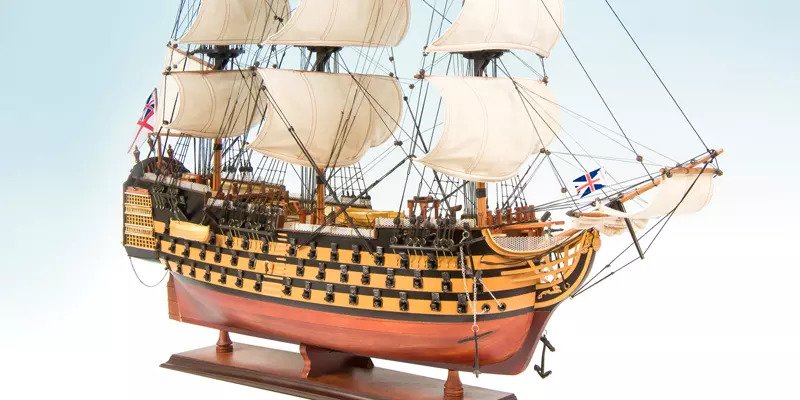

Professional BoatBuilder Magazine
Australia ii wing keel controversy – part 2.
By Professional BoatBuilder , Mar 20, 2024

On the morning of August 6, 1981, Peter van Oossanen, left, and two technicians at the Netherlands Ship Model Basin (NSMB) carried out tests of the final hull, keel, winglets, trim tab, and rudder configuration of Australia II, the Australian challenger for the 1983 America’s Cup.
We pick up Peter van Oossanen’s account in Part 1 of his team’s involvement in developing Australia II .
On April 9, 1981, I sent a telex to designer Ben Lexcen, asking him what changes he wanted to make to the Australia model after it had been tested. We had discussed this in Sydney on March 13, but that hadn’t led to a firm plan. He replied that he wanted to change the sweepback angle of the keel and, afterward, test a thicker version. I was surprised he was thinking of such small changes, suspecting they wouldn’t be sufficient. We had earlier discussed major modifications such as those relating to shortening the waterline length, reducing displacement, and testing widely differing keels for Australia II.
More than a year prior, I had met Joop Slooff, an aerodynamicist employed by the National Aerospace Laboratory (NLR) in Amsterdam. We had been seconded to a Royal Netherlands Navy working group studying the merits of employing advanced marine vehicles for specific naval tasks. We discovered we had similar interests, one of which was sailing. I called Slooff on April 13 to ask about the possibility of performing calculations to determine the merits, in terms of lift and drag, of widely differing keel shapes. He was enthusiastic and agreed to perform the study. After he’d informed me of the approximate cost, I sent a telex to Warren Jones, executive director of Alan Bond’s America ’s Cup Challenge, and Lexcen on April 15: “A new computer program has become available at the aerospace laboratory in Amsterdam with which a study can be carried out to determine the optimum shape of the keel for maximizing side force and minimizing the associated (induced) drag. I strongly recommend that this program be used to arrive at one of the alternatives to be tank-tested. Please forward your agreement, or otherwise, by return telex. The results of the calculations would be available in time for incorporation into the test program in May. The additional costs involved are in the order of . . .”

Fitted with the controversial wing keel, the 12-Meter Australia II, left, defeated defender Liberty, right, ending U.S. domination of America’s Cup competition since 1851.
Slooff was unfamiliar with the America ’s Cup and the type of yacht used for the event, so I decided to visit him to inform him of the format of the race, about 12-Meter class yachts, and that any work he was to do was to be kept strictly secret. When he confirmed that condition would not be a problem, we discussed the next steps. He and his colleagues offered to carry out the calculations for as many as five keels of drastically varying aspect ratios and sweepback angles, all at a minor cost. Slooff’s superior sent me a formal proposal by letter. Since I still hadn’t received a reply to my April telex, I called Jones. He wanted Lexcen to decide on the study, so I called directly. Lexcen was lukewarm to the idea but agreed to have it done when I told him that I didn’t believe his modifications of the existing keel would offer enough potential performance improvement. A colleague and I visited Slooff in Amsterdam that same afternoon. We finalized the scope and details of the work and the shape of the four keels to be studied, with the fifth keel reserved for the best of the four fitted with winglets. (Slooff had convinced me to look at the merits of winglets.) He estimated he could complete calculations for the first four keels by May 19, 1981.
Lexcen and his wife, Yvonne, had arrived on April 28. I met with Slooff and Lexcen at the Netherlands Ship Model Basin (NSMB) on May 4. We discussed the keel configurations for which Slooff would perform calculations, and Lexcen told us about the two keel modifications he wanted to have tested. We set him up in an office close to the testing site, and NSMB staff prepared drawings of the two keel modifications and had them built such that when the base keel was removed from the model, these new variations could be fitted.
Lexcen said he wanted to work on the design of a laminated composite construction he envisioned adopting for the new boat. As far as I’m aware, this was the first time anyone considered composite construction for a 12-Meter, with New Zealand being the first to actually do it, in the 1987 Cup. He told me that while he was with us, he would visit Lloyd’s Register in London to seek approval of his construction plan before returning to Australia.

The top figure shows the original Australia fitted with the base keel (model reference: Keel I), and alternative keels—one possessing less sweep (Keel II), the thicker keel (Keel III), and the first “inverted” keel (Keel IV), and with crude winglets (Winglets I). The middle figure shows the original Australia hull fitted with the smaller inverted keel with more refined winglets (Keel V with Winglets II). At bottom, the 44′ (13.41m) hull is fitted with the final inverted keel and winglets (Keel V A and Winglets II A), and new rudder.
The extensive series of tests with the base model, which included fine-tuning the towing arrangement, finished on May 6. We spent two days analyzing the results and discussed our findings with Lexcen on May 11.
Four days later, Lexcen returned to NSMB with Jones as we performed the tests with the Australia hull fitted with Keel II (the leading edge of which had less sweepback but was otherwise the same as the base keel—Keel I). We tested the thicker version (Keel III) the next day. The three of us spent time on the towing carriage on both days, discussing the project and the results thus far.
Meanwhile, Slooff had completed the calculations for the four “planar” keels. He called me on May 12 to say that the “inverted” keel (possessing zero sweepback and a taper ratio equal to 2.0) was marginally better, leading to approximately a 1% increase in velocity made good to windward in 8 knots of true wind.
By today’s standards, the subject calculations were crude, the hull, keel, and rudder having been primitively modeled by relatively large flat surface panels and, in adhering to zero heel for these calculations, not addressing the physics properly. I figured that the error in the subject calculations would probably be the same in all four cases, however, leading to the conclusion that the inverted keel was not inferior to the base keel. I remember thinking that the advantage of adopting the inverted keel lay in the possibility of fitting the required lead ballast lower in the keel—precisely the characteristic required of the 44 ‘ (13.41 m) waterline length concept.
Before Jones returned to Australia, I proposed redesigning the hull to test the 44 ‘ concept in the tank with the inverted keel. After considerable discussion, we agreed to first test the inverted concept on the existing Australia hull to check Slooff’s calculations. We referred to that model as Keel IV.
In a meeting with Lexcen on May 19, Slooff expanded on what he had told me over the phone. We agreed with his suggestion to add winglets to the panel model of the inverted keel and to repeat the calculations. We discussed the design of these winglets in terms of location, span, chord length, and dihedral angle. The resulting configuration constituted the fifth and final model to be analyzed by NLR.
We had another long discussion with Lexcen about the results of the model tests with the base keel (Keel I) and Keels II and III. The results in terms of the speed made good to windward (V MG ) at discrete true wind speeds were as listed in Table 1 .
These results reveal that Keel II possesses lower V MG values at true wind speeds up to 8 knots and small increases at higher true wind speeds. And Keel III yields lower speed made good to windward values at true wind speeds up to 9 knots and somewhat greater improvements at higher wind speeds. Lexcen wasn’t unhappy with these results, but he realized that they were not going to win the America ’s Cup for Australia.
The drawings required for the manufacture of Keel IV (with and without winglets) were prepared between May 20 and 22. I had instructed Henk van Amersfoort, the draftsman seconded to me for the project, to adopt the same lateral area as the base keel, the same foil shape, for the quarter-chord distribution across the span to possess zero sweepback, and to adopt a taper ratio of 2.0. The two of us designed that first keel with and without winglets, with input from Slooff.

In the top drawing, the continuous line is the contour of the original Australia keel (with Keel I). The dash-dotted contours are the thicker keel (Keel III); and the dashed line is the more upright profile (Keel II). The contours in the middle figure are the first inverted keel (Keel IV) on the original Australia hull fitted with (crude) winglets (Winglets I). The continuous line in the bottom figure is the refined inverted keel on the Australia hull (Keel V and Winglets II); and the dashed line is the final keel (Keel V A) and winglets (Winglets II A) and trim tab on the 44′ hull (note the vertical trim tab stock)
Testing the Winglets
On June 5 Slooff told me that his calculations indicated the winglets reduced the drag due to lift (the induced drag) by as much as 35%. I was relieved; we had already prepared drawings of the winglets as an add-on to the inverted keel, and the manufacture had commenced. Lexcen was in London to discuss the yacht’s construction with Lloyd’s Register .
We tested the model fitted with the inverted keel on Monday, June 9, and added the winglets late that evening for tank-testing the next day. Lexcen was present both days, and I invited Slooff to witness the tests with the winglets fitted. Our eyes were glued to the raw data the computer on the towing carriage spat out after each run. That information told us that the generated lift (side force) of the hull fitted with Keel IV and Winglets I was significantly higher, as was the drag. The winglets had added wetted surface area, leading to higher friction drag. It became obvious to all of us that afternoon that the keel needed to be considerably smaller, retaining its depth but decreasing chord length. My graph of measured side force versus leeway angle led me to propose a reduction of 25%. When that was decided, my draftsman was given instructions on how the keel and winglets needed to be modified. Lexcen prepared a sketch of the way the keel would look, a sketch I released to journalists after the Cup competition was over.

Van Oossanen, left, and Australian designer Ben Lexcen watch as the inverted keel with the first crude winglets fitted to the base Australia model was readied for tank-testing at NSMB.
To determine the required twist along the span of the winglets, I arranged to segment them, allowing each of the five segments to rotate about an axis that passed through the quarter-chord location. A force transducer in each segment allowed us to measure the lift, drag, and pitching moment acting on that segment. After finding the angle-of-attack setting each of these segments required to minimize drag sailing downwind, it was relatively simple to determine the twist along the span. This twist was adhered to in the design of the smaller winglets and in all subsequent winglets.
The results in terms of the speed made good to windward, available the following day, were disappointing, as shown in Table 2 . These results indicated that the inverted keel possessed an edge over the base keel, except at true wind speeds of around 6 and 7 knots. The improvement of between 0.04 knots and 0.09 knots in V MG upward of some 7.5 knots of true wind was beginning to look promising. The velocity made good to windward for the case with winglets, however, was everywhere considerably less. When I showed these results to Lexcen, he too was disappointed—a letdown after seeing the high side-force values the keel with winglets was developing the previous day.
The project had by now considerably increased in scope and budget. I sent Jones a telex after he visited NSMB on May 16 and 17, and he agreed to increase the budget, allowing us to test Keel IV with and without winglets. When Lexcen and I discussed the state of our research on June 11, we decided that we needed to test the downsized keel with the more refined winglets as well. Jones again agreed to cover the cost. In his telex dated June 9, he informed me: “I am today arranging to forward … dollars, as this is the sum already granted by Australian government reserve bank controls. I am now applying for permission to remit the balance of the estimated sum, which should be cleared within 14 days. I agree that Lexcen must remain [at NSMB] until final configuration is agreed upon, thus leaving you to complete your formal report, which is required by Alan Bond by the earliest possible date. We are becoming concerned that our total program is already six weeks behind our original schedule.”
In this telex, Jones alluded to the importance of Lexcen’s attendance at NSMB for the duration of the project. I had informed him before that the naval architect was “sick of cheese” and wanted to return to Australia as soon as possible. It was the first time in all our discussions and correspondence that Jones and I hinted at the Dutch influence on the design of the yacht and its possible consequences. This was later to become an issue, leading the NYYC to consider abandoning the 1983 America ’s Cup. Lexcen didn’t heed Jones’s instruction and, after providing him with copies of our drawings, calculations, and test results, he left NSMB on June 17. According to telexes I have copies of between Jones and Lexcen, the latter flew to Australia on June 20. He did not return until much later that year, to discuss other matters.
We performed the tests with the smaller inverted keel and more refined winglets on July 2 and 3, with Slooff in attendance to witness some runs on the second day. As I expected, the results in terms of the speed made good to windward remained disappointing. As shown in Table 3 , the base model with Keel I was still the best in true wind speeds of up to about 7.5 knots.
Knowing that wind speeds of less than 7.5 knots were common in the summer off Newport, Rhode Island, I felt justified in now pushing to have Lexcen and Jones embrace the 44 ‘ concept we had spoken about together several times before. The short telex I sent to Lexcen on July 1 was to the point: “Subject tests are to be carried out on Friday, July 3. Will telex results on Monday, July 6, 1981. The wetted surface of the hull with Keel V is still 5% higher than the hull with Keel I. We are drawing a new aft-body-rudder configuration for your consideration. Will send drawings early next week. We hope you have recovered from our climate, etc., and travel back to Sydney.”
The 44 ‘ Concept
Wednesday, July 1 through Friday, July 10 was the high point of the project for me. Upon considering the results obtained to date and knowing that the wetted surface area of the hull fitted with Keel V and Winglets II (the smaller inverted keel and more refined winglets) was still about 5% greater than that of the hull with Keel I, I believed that we needed to address design changes required to implement the 44 ‘ concept. I sat down with my draftsman and redesigned the aft 40% of the hull, reducing the displacement to correlate to the flotation waterline length (on the MWL plane) of 44 ‘ . It entailed a considerable modification to remove the pronounced bustle that all previous 12-Meters possessed since Intrepid and move the rudderstock forward by 0.3m (11.8 “ ). I increased the thickness of the winglets (to accommodate more lead ballast) and reduced the height of the keel to that required by the 12-Meter Rule when length is lessened. Furthermore, I took the liberty of changing the design of the rudder and trim tab as well. I sent Jones a long letter on July 2 explaining what we were doing. I called Lexcen on July 4 to update him on the test results and two days later in a long telex explained that what we were doing was necessary to improve light-air performance. In the letter to Jones, I addressed the cost and time issues. Knowing that I needed to explain my reasoning in detail, I decided to travel to Australia to discuss everything and answer questions.
When I visited Lexcen at his office at home in Seaforth on July 16, I showed him the results of the last set of tests, calling his attention to the upright drag tests (representing downwind conditions), which revealed the boat was slower than the base boat in light conditions. I showed him the speed-made-good plots and compared them to those of the earlier models. We also compared the values for the center of side force of all the models and the results of turning tests indicating that the model with the smaller keel and winglets required a turning force about 25% less than that of the base model for a rudder angle of 30°. We realized that pre-start maneuvers would greatly benefit from adopting the smaller keel.
I showed him the drawings we prepared for the 44 ‘ concept, and we discussed the proposed changes to the keel, winglets, trim tab, and rudder I had prepared drawings for. We focused on the resulting values of the prismatic coefficient because we knew that with decreasing length, we would incur additional wave drag at high speeds—such as on the reaching legs of the Olympic triangle used for the America ’s Cup. Some two hours later, Lexcen agreed to all proposed changes subject to wanting to make a small modification to the waterlines immediately in front of the rudderstock.

Helmsman John Bertrand, left foreground, and head of the challenge syndicate, Alan Bond, right, are dockside on Australia II between races in Newport, September, 1983
He asked me to return on July 19 to pick up the table of offsets for the change to the waterlines and to answer any questions he might then have. I knew he would want to think further about what we talked about and that he might need to call Jones to discuss this radical development. On the 19th he asked me to implement everything I had proposed. He had prepared the table of offsets for me to send to NSMB the following day to allow model manufacture to get under way.
I returned to my office on Monday, July 27 and was surprised by a message from Jones about wanting to visit us with Alan Bond and helmsman-elect John Bertrand and that they would arrive within the hour. He said they were sailing the Admiral’s Cup and that today was a lay day. They had traveled to Wageningen by helicopter and wanted to see the latest model and talk about its performance.
I asked Slooff to attend and decided to chair the meeting, present them with an agenda, and run things very formally. Slooff and I explained in detail, step by step, the work we did. It soon became apparent that Bertrand was hesitant to build and campaign a yacht that was as radical as the proposed Australia II . Bond and Jones were enthusiastic, however, and before they left to return to their waiting helicopter, Jones told me that they had decided to build two boats—the conventional hull with Keel III, and the design with the 44 ‘ hull and the final inverted keel with winglets. Both boats were to be built in Fremantle at Steve Ward’s boatyard. And both would be aluminum, as there was insufficient time left to work with Lloyd’s Register on the composites option. It was my turn to be elated. Jones thanked me by telex when he returned to Perth: “Peter, thank you for receiving Alan, John, and me. We were delighted with the trip, and they certainly left your premises enthusiastic about the approach which had been adopted.”
We performed tests with the final hull fitted with the final keel and winglets and the new trim tab and rudder on August 6 and 7. I called Lexcen about the results. I told him that we now had the performance needed to win the America ’s Cup.
The Final Design
The speed made good to windward of the original Australia , the Australia hull with the inverted keel reduced in size (Keel V) and modified winglets (Winglets II), and the 44 ‘ hull with modified keel (Keel V A ) and winglets (Winglets II A ) were as given in Table 4. They reveal the significant improvement in the speed made good to windward. The right-hand column in Table 4 presents the results for the final configuration with the 44 ‘ flotation waterline. We also performed so-called tuft tests to determine the nature of the flow on the keel and the hull in way of the keel.

Australia II’s winged keel was hidden from public view when the boat hung in slings between races, and its deceptive paint scheme disguised its shape while under way. The keel was revealed to curious crowds after the last race.
Knowing that these tests represented the final step in the design, Lexcen requested that I send a full set of hydrostatic and stability calculations and a full set of test results. A table of offsets for building the yacht, the required position of the mast, a lines plan on a 1:10 scale, a copy of all drawings prepared for the project, a complete set of all photographs taken, the location of the required lead ballast, and the resulting center of gravity—I sent most of this information to him on August 14 together with a cover letter in which I provided the information for rating the yacht. This included a table defining the rated length of the original Australia and the 44 ‘ yacht, the LWL value, the displacement in racing trim and when floating on the MWL waterline, the weight of crew and sails, the wetted surface area, the maximum draft, and the rated sail area.
I informed him of the necessity to move the rudderstock aft by 7cm (2.76 “ ) and the keel forward by 210mm (8.27 “ ). The hydrostatics of the new hull, keel, and winglets revealed that the yacht’s center of gravity needed to shift forward by 187mm (7.36 “ ) to accommodate the new location of the center of buoyancy, and that the resulting flotation waterline would then have a length of 14.03m (46.03 ‘ ) instead of the desired 14.1m (46.26 ‘ ). I reminded him of these changes when, at his request, I sent him tracings on Mylar of the lines of the hull, keel, and winglets on September 10.
Jones had requested an update on project costs. I sent those in a long letter dated August 13, enclosing an invoice for the remaining costs and the Table, which I also sent to Lexcen.
In late August I embarked on a much-needed holiday with my family and upon returning to NSMB was faced with extensive travel for other projects—Leningrad, Newcastle (England), Seattle, Washington, D.C., New York, Hamburg, Boston, London, Sydney, Hoboken, and Brussels—before I was able to start writing the final report.

Bertrand and Bond on the winner’s podium with the America’s Cup.
Lexcen visited me at NSMB in late October mainly on matters not related to the 12-Meter project, and we stopped by NLR to see Slooff. I visited Lexcen in Sydney when I was there for a week on November 14.
I finished my final report in December 1981. It included details of our tank-testing process and results.

A bout the Author: Naval architect Peter van Oossanen was a principal scientist at the Maritime Research Institute Netherlands (MARIN) in 1969–1991. He wrote the definitive text on the resistance and propulsion of ships in 1988 and founded the Van Oossanen Group in 1992. Since retiring in 2013, he has written five books about the science of sailing.
Read more Design , Drawing Board , People/Profiles , Racing articles

- Amphfoil marries Air Props and Hydrofoils
In the wake of the Miami International Boat Show in February, longtime builder of quality cruising sailboats Shannon Boat Company of Bristol, Rhode Island, announced the rollout of the Amphfoil… Read more »

Departures: Carl Chamberlin
Passionate, competent, considerate, modest, and thoughtful is how designer and boatbuilder Carl Chamberlin is remembered by those who knew him. He died last November at age of 75 in Port… Read more »
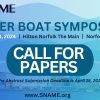
SNAME Powerboat Symposium Is Back
The Society of Naval Architects and Marine Engineers (SNAME) Technical and Research Program, in cooperation with the Hampton Roads, Virginia Section of SNAME, will host the Sixth Annual Powerboat Symposium… Read more »

Recent Posts
- CTM Marine Prepares for Summer 2024
- Rybovich Refit Revisited
- There was Only One Partner I’d Trust for the Refurb Project of my Life: AkzoNobel
- Citimarine Store Expands to a New State of the Art Location in Miami
- Companies (86)
- Construction (107)
- Design (162)
- Drawing Board (11)
- Education (25)
- Environment (16)
- Events (21)
- Materials (50)
- Obituary (18)
- People/Profiles (49)
- Products (16)
- Propulsion Systems (33)
- Racing (16)
- Repair (37)
- Rovings (319)
- Short Cuts (3)
- Sponsored Partner News (17)
- Systems (80)
- Task Sheet (1)
- Uncategorized (26)
- Wood to Glass (7)
ProBoat.com Archives
40th anniversary of Australia II yacht winning 1983's America's Cup: WA Maritime Museum
Ask anyone of a certain vintage the significance of September 26, 1983, and chances are their face will light up as they say, "that's when we won the America's Cup!".
Create a free account to read this article
(min cost $ 0 )
Login or signup to continue reading
The yacht Australia II made history when the oldest sporting trophy in the world was wrested from the Americans after 132 years.
Discussing the upcoming 40 th anniversary celebrations of the legendary win, crew member Skip Lissiman said the team had no inkling of the impact of the success until they arrived back in Perth.
"We had no idea how big it was back in Australia and how much people were getting behind it," he said.
"It was very unusual for people to support and follow a yacht race on the other side of the planet.
"So we were very surprised how big it was back here and I don't think in sporting terms there has been anything to equal it, although maybe the Matildas will."
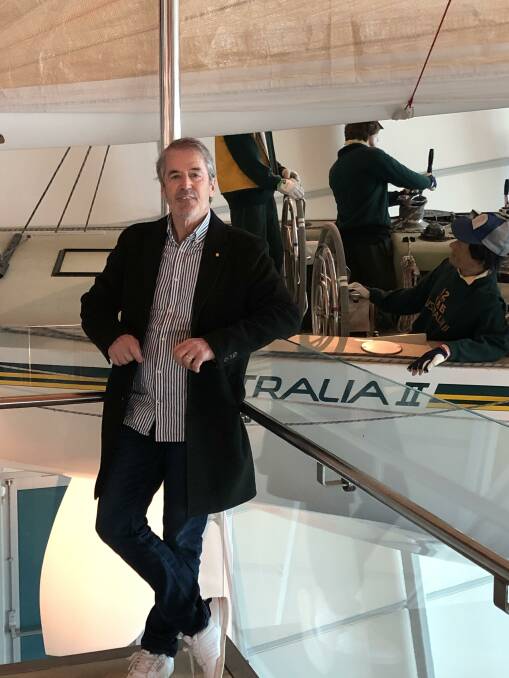
Former prime minister Bob Hawke recognised the win's impact on the nation's psyche.
"I sat next to him at the 30 th anniversary celebrations in Sydney and he turned to me and said, 'You know what, in all the things I did as a politician people still say the one thing they remember most about me is what I said on the day we won the America's Cup'," Skip said.
"His words were, 'Any boss that sacks a worker for not turning up today is a bum'.
"For all the reforms he achieved, that is the thing people remember."
Skip said his main feeling about the win at the time was relief.
"That was my second America's Cup. I did another one in 1980, and it took me nearly six months to get over the loss.
"So to win was a relief, but over time the elation kicked in."
That summer in Newport, Rhode Island, involved a lot of hard work.
"It was up early at 6am, an hour of exercise, throw some breakfast down, rush down to the boat, put the sails onboard, head out on the water - quite often it was a one-hour tow to get out to the race course area - get the sails up, test, check the winds, check the conditions, check the set-up, do some adjustments to the boat, then race."
He said the race could take as long as five hours.
"And it wasn't unusual for us to have two races in a day, then they would be more like to two-three hours each. Then tow back, get sails out of the boat, do any maintenance work, throw some dinner down, go to bed and repeat the same thing seven days a week."
Skip said many elements went into Australia II's success.
"Everyone focuses on the famed winged keel as being the magic thing that won the America's Cup. The reality was there was a multitude of components that went into the success.
"The winged keel was part of it, but equally the crew and the team were extremely well prepared and certainly on par or superior to the American team and crew."|
He said the sails were revolutionary in design, materials and how they were prepared, while the management skills in being one step ahead of the Americans were essential.
"The vision and backing of Alan Bond was exceptional," Skip said. "After being defeated three previous times he continued to persevere."
Skip is still very involved in sailing, having been on the board of directors of Australian Sailing for seven years. "If you are passionate about something and you can turn your passion into reality and commercialise it, then you are away."
An exhibition to mark 40 years since Australia II won the America's Cup will take place at the yacht's permanent home, the WA Maritime Museum , Victoria Quay, from September 9-February 4.
Australia II: 40 Years On will include a new film featuring untold stories by the 1983 winning team members, including Skip. On the second Tuesday of the month, entry to the maritime museum is by gold coin donation.
Advertisement
Get the latest Senior news in your inbox
Sign up for our newsletter to stay up to date.
We care about the protection of your data. Read our Privacy Policy .

Australia II

Australia II was built for the 25th America’s Cup in 1983 under the Third International Rule. She competed and defeated the American yacht, ‘Liberty’, the first time the Cup had been taken away from the New York Yacht Club. The innovative wing keel design of Australia II gave her the winning edge but Dennis Conner, the defeated skipper, was back with a vengeance for the next America’s Cup in 1987.
Australia II is now owned by the National Museum of Australia and was ‘let out’ to attend the America’s Cup Jubilee Regatta at Cowes in 2001.
SHARE THIS:
- Yachts for Sale

Recently updated...

Write an Article
Covering news on classic yachting worldwide is a tall ask and with your input Classic Yacht Info can expose stories from your own back yard.
We are keen to hear about everything from local regattas and classic events to a local restoration or yachting adventure. Pictures are welcome and ideal for making the article more engaging.
With a site that has been created with the assistance of an international group of classic yacht enthusiasts we value your input and with your help we strive to make CYI more up-to-date and more informative than ever.
Please register and get in touch if you would like to contribute.

choose your language:
We’re passionate about Classic Yachts here at CYI, and we welcome submissions from all over the globe!
Captain, rigger, sail-maker or chef – if you’d like to write for CYI just let us know!
Email [email protected] to be set up as a Contributor, and share your Classic thoughts with the world.
ClassicYachtInfo.com has the largest database of classic yachts on the internet.
We’re continually working to keep it accurate and up-to-date, and we greatly appreciate contributions of any type. If you spot an error, or you have some information on a yacht and would like to contribute, please jump on in!
Don’t be shy…. Breeze on!
- Sell Your Yacht
- International edition
- Australia edition
- Europe edition
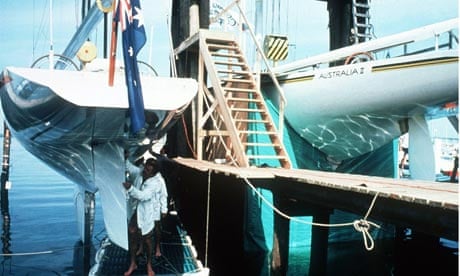
Australian 'did not invent winged keel on yacht that won America's Cup'
It was a sporting victory that inspired Australia's then prime minister, Bob Hawke, to declare any boss a "bum" if they sacked a worker who took the day off to revel in the nation's glory.
But now the legacy of the Australian yachting team's spectacular triumph, when it seized the America's Cup in 1983 to end the New York Yacht Club's 126-year grip, has been rocked by claims that the man hailed as a hero for the winning vessel's revolutionary design only played a minor role in its creation.
Ben Lexcen is credited for Australia II's winged keel. But Peter van Oossanen, a Dutch naval architect who worked with Lexcen on the vessel, says he can confirm what the Americans alleged in protracted court battles but could not prove – that the boat broke America's Cup rules on yachts having to be designed by residents or citizens of the country they represented.
Van Oossanen says that he and a Dutch aerodynamicist, Joop Slooff, designed the upside-down keel and its winglets and that Lexcen was not even in the Netherlands during crucial development phases and may contributed 5% or 10% to the design. "He had a flair for things, a flair for shapes. But he wasn't a scientist and he wasn't able to understand the full physics of what was going on," Van Oossanen said.
"He left to go back to Australia … before the vital tank tests. The role he played was a minor one." But he added that Lexcen, who was awarded the Order of Australia and had a car name after him, was a "true Australian hero" as well as a friend until his death in 1988. After years of silence, Van Oossanen, who became an Australian citizen 19 years ago, said he had become frustrated with the glorification of Lexcen and the denial of the Dutch role in Australia's victory. "I would have taken this to my grave. But they are writing us out of history.
This is the first time Van Oossanen has explicitly claimed Lexcen was not the designer."
He claims that the millionaire businessman Alan Bond, who bankrolled the Australia II yachting team, paid him A$25,000 to keep silent. Bond, who has since served four years in prison for illegally siphoning money from his company, countered that Van Oossanen's claims were malicious and the sum was payment for extra work done.
"This was Ben's idea completely. The idea is sacrosanct, and to suggest otherwise is mischievous and an insult to his memory," Bond said.
But others have also rallied to Lexcen's defence. Australia II's reserve skipper, James Hardy, said that while "there is no doubt that [Van Oossanen] did a lot of work", Lexcen was the creator, who had adopted aerodynamic elements on his revolutionary 18ft skiff in the late 1950s.
Australia II skipper, John Bertrand, said Lexcen was Australia's Leonardo da Vinci, but added that "success has many fathers".
- America's Cup
- Asia Pacific
Most viewed

- CLASSIFIEDS
- NEWSLETTERS
- SUBMIT NEWS
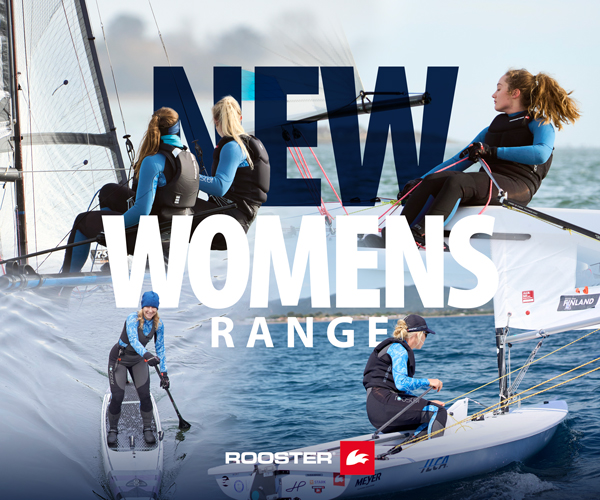
Australia II - John Rousmaniere reflects on that winged keel
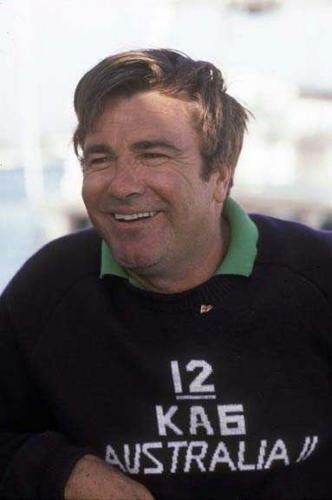
Related Articles
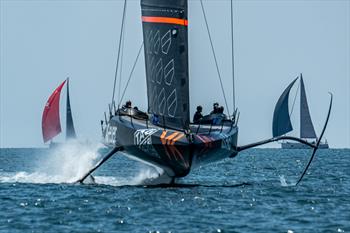

IMAGES
VIDEO
COMMENTS
Australia II has become one of the nation's most recognisable vessels, thanks to that extraordinary America's Cup win in 1983. Almost everyone knows about its winged keel that seemed to make it unbeatable. The keel completely spooked the Americans who tried many moves off the water to avoid having to race against Australia II.However there was much more to the boat than just that keel ...
Design. Australia II was designed by Ben Lexcen, built by Steve Ward, owned by Alan Bond and skippered by John Bertrand. Lexcen's Australia II design featured a reduced waterline length and a short chord winged keel which gave the boat a significant advantage in manoeuvrability and heeling moment (lower ballast centre of gravity) but it was a significant disadvantage in choppy seas.
Winged keel of Australia II. The winged keel is a sailboat keel layout first fitted on the 12-metre class yacht Australia II, 1983 America's Cup winner. Design ... Note that, contrary to classic configurations, the keel of this boat is "upside down" under the hull (the root chord is smaller than the tip ...
Australia II's 1983 America's Cup win was largely credited to her revolutionary winged keel design. All sorts of interesting things happened back in 1983. McDonald's introduced the Chicken McNugget, Microsoft Word was released, and Swatch watches were all the rage. For sailors, however, the biggest news of 1983 was when the 12-Meter Australia ...
11:45 AM Thu 15 Oct 2009 GMT. 'The man whose name is synonymous with the winged keel, Ben Lexcen was the most prolific Cup designer over the five-match period that ran from 1974 through 1987.'. Rolex. Noted America's Cup historian, John Rousmaniere reflects on the current brouhaha over the designer of Australia II's winged keel.
At that time, the rules governing the Cup required that each yacht be designed by citizens of the country it represented. The principal designer of Australia II, the eventual winner, was indeed a "national"-Ben Lexcen. Much of the development work on that boat, however, was performed at the Netherlands Ship Model Basin (now known by the acronym ...
The winged keel made Lexcen's new boat, Australia II, much faster and more manoeuvrable - and importantly, the Australians' secret weapon also became a psychological weapon.
by www.proboat.com on 30 Sep 2009. The man whose name is synonymous with the winged keel, Ben Lexcen was the most prolific Cup designer over the five-match period that ran from 1974 through 1987. Rolex. In the summer of 1983, in the months leading up to the 25th America's Cup competition in Newport, Rhode Island, a storm of controversy ...
On 26 September 1983, the yacht Australia II made history when the oldest sporting trophy in the world, the America's Cup, ... The designer of Australia II, Ben Lexcen, had conceived a winged keel that under secret testing in the Netherlands had out-performed conventional keels. The yacht was built in Cottesloe by local boatbuilder Steve Ward.
His design challenged the strict formula for designing 12-Metre class racing yachts, known as the America's Cup Rule. A revolution was about to occur. Australia II, with its winged keel was kept literally under wraps before the America's Cup races off Newport, Rhode Island. To chants of 'Show us the keel!' and a media frenzy about what ...
So revolutionary was the winged keel design that its legality was questioned by the New York Yacht Club upon its arrival at the selection trials for the cup in 1983. With the ruling in favour of the Australia II, the yacht participated in and won the Louis Vuitton Cup, dominating the competition.
Australia II Wing Keel Controversy - Part 2. On the morning of August 6, 1981, Peter van Oossanen, left, and two technicians at the Netherlands Ship Model Basin (NSMB) carried out tests of the final hull, keel, winglets, trim tab, and rudder configuration of Australia II, the Australian challenger for the 1983 America's Cup. We pick up ...
Underneath, as half the world must know by now, lies the dreaded winged keel, a bulbous, delta-shaped device that has shaken this ancient boat race tradition to its very foundation and now threats ...
Soling. Updated on 1 March 2014. Benjamin Lexcen AM (born Robert Clyde Miller, 19 March 1936 - 1 May 1988) was an Australian yachtsman and marine architect. He is famous for the winged keel design applied to Australia II which, in 1983, became the first non-American yacht to win the prestigious America's Cup in 132 years.
A lot. In hindsight, the 1983 America's Cup looks like the marker buoy that the whole nation's idea of itself rounded, to head in a bold new direction, swapping out the old sails for a glorious new set of go-get-'em spinnakers. The cup seemed to sweep aside the cringing colonial relation to Mother England.
The America's cup yachts began with Alan Bond's Southern Cross in 1974, then co - designed Australia in 1977, which also raced (modified) in 1980, Challenge 12 and Australia II in 1983, and Australia III & IV in 1987. Southern Cross was a long boat with too little sail area, and Australia had a problem with her hull shape at around nine knots.
The yacht was built in Cottesloe, WA by boatbuilder Steve Ward. Lexcen's winged keel was at the centre of much controversy. Upon arrival in Newport, Rhode Island, the keel was hidden from view with tarpaulin 'modesty skirts' that were draped over the side of the boat each day before it was lifted in or out of the water.
The yacht Australia II made history when the oldest sporting trophy in the world was wrested from the Americans after 132 years. Discussing the upcoming 40 th anniversary celebrations of the legendary win, ... "Everyone focuses on the famed winged keel as being the magic thing that won the America's Cup. The reality was there was a multitude of ...
The purpose-built Maritime Museum has housed the iconic winged keel yacht since 2002, and is now also home to one of the most significant America's Cup collections in the world, including one of only three exact replicas of the coveted Cup, thanks to a donation by Kerry Tasker, widow of Australia's first Olympic sailing medal winner, Rolly ...
Australia II. The unveiling of the wing keel. Australia II was built for the 25th America's Cup in 1983 under the Third International Rule. She competed and defeated the American yacht, 'Liberty', the first time the Cup had been taken away from the New York Yacht Club. The innovative wing keel design of Australia II gave her the winning ...
Australian 'did not invent winged keel on yacht that won America's Cup'. Dutch designer claims Ben Lexcen played minor role in creating revolutionary keel for 1983 cup-winning boat. Toni O ...
Some of his Australian 18s, model boats, and other designs had wing-like endplates and unusually small fins.When he worked on the design for Bond's 1977 Cup challenger, Australia, he and his associate, Johan Valentijn, tested wings and a keel 15 to 20 percent smaller than the norm before doubts about the accuracy of the tank tests led them ...